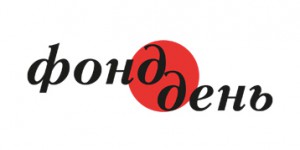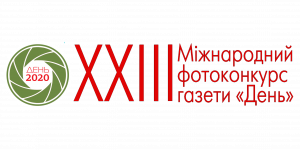The Internet newspaper Ukrayinska pravda has garnered its first million website visitors. Without doubt quite an event for the political Uanet that took place last week. Also, the number of visits Ukrayinska pravda showed the previous week got this electronic edition far ahead of all other Ukrainian Internet resources — retrieval systems, entertaining chats, ports (among them information and entertaining ones), even free-of-charge E-mail services. The reason for such incredible popularity is obvious for all, Ukrainians included. “Regrettably, the lion’s share of this six-digit number is ours not so much owing to our talent as to objective circumstances. First, the Uanet was badly shook by Heorhy Gongadze’s disappearance and the final blow was dealt by Oleksandr Moroz’s audio cassettes. Never before have the Ukrainian media been so necessary, just as nothing of the kind has happened before in Ukraine. It is horrible, but millions of Ukrainians heard the word Internet for the first time when the Gongadze case surfaced (http://www.pravda.com.ua/?0127-9-1).
Indeed, users’ response to the Moroz tapes appearing in certain online resources has been the number one event in the past two weeks, boosting the group Internet media ratings almost twofold. ProUa noted ironically that “one’s desire to see and hear foul language got the better of all other inquiries addressed to the Internet... Seeing such a tempestuous reaction, although quite humiliating to journalists (so much has been written and no one has bothered to read any of it, then suddenly three voices with a lot of expletives and an avalanche of search entries one had to work hard to handle), Ukrayinska pravda prepared a special banner, placing it at the very top of the site’s initial page (www.proua.com/const-htm/ mhitech.ph?id_art =409). Incidentally, there is a similar banner reading “Scandal with Moroz Tapes. All the Details” prepared and positioned by Korrespondent.Net roughly in the same place, over the latest news. This must have been meant to symbolize the superiority of lasting over short-lived values. Nevertheless, even now there is every sign of an inevitable rollback. One is reminded of another popularity temptation sustained by Ukrayinska pravda. In the week following Gongadze’s disappearance the number of site visits doubled (from 700 to more than 1,500), followed by a down curve, so that by October 22 the ratings had almost got back to normal. An alarming symptom showing that Uanet political network editions are underdeveloped and weak. Thus, every visitor of the UP site could not but notice the scarcity of materials (10 a day, as a rule), mostly repeating Interfax reports and offering borrowings from other media dealing with Ukrainian politics. In fact, Pravda people explain this approach by lack of professional staff.
They are right, of course; but for the Gongadze case, the project’s readership would have been dramatically small, mostly because Interfax reprints are not likely to attract user interest, even if rewritten, made understandable rather than bureaucratic, with a touch of opposition rhetoric added. This approach does not seem to have a future, as evidenced by Russia’s Internet with its collapsing resources relying on the same principles as Ukrayinska pravda. The fall of News.Port (www.new.port.ru) serves as a good example. Unlike the Ukrainian Internet market, the one in Russia is packed, so that a new site using secondhand information cannot count on success. Moreover, some experts maintain that even a new quality information resource practically does not stand a chance. Marina Litvinovich, coordinator of Internet projects under the Effective Politics Fund, led by the conspicuous Gleb Pavlovsky) is still in the lead in the number of Internet resources it has developed and promoted (www.gazeta.ru, www.vesti.ru, www.lenta.ru, www.russ.ru, www.smi.ru, www.strana.ru), she said in an interview with Izvestiya. She offered a forecast of publications specializing in secondhand information: “Visitors will gradually realize that they are supplied secondhand products, products of someone else’s information processed. Of course, there are really tragic cases like that with News.Port.ru. Just as that resource became available, I had written an article about the secondhand data crisis for SMI.ru. Among other things, I suggested the way such resources are made: a couple of individuals study Interfax files and watch television, and then place something of what they read and hear on the site, adding photos (now this rings a bell, doesn’t it? — Author). I was horrified to learn that my assumption was correct, for this was precisely the technology used by that resource. I simply guessed right. Before long a lot of news visitors will come to the same conclusion. An increasing number of subscribers will want exclusive material, online news, so they will look for the original source.” Unlike the Russian information resources market, the one in Ukraine is still maturing, but the trends point in the same direction as the Runet’s. Thus the motto, make secondhand products and eat well, could well lose its relevance in Ukraine before long. Well, the process can be slowed down, say, by political scandals. Thus, in the 24 hours following the appearance in the Internet of a transcript of the interview with the person who, allegedly, made the so-called Moroz cassette, the popularity of Ukrainian political network resources once again rose.






